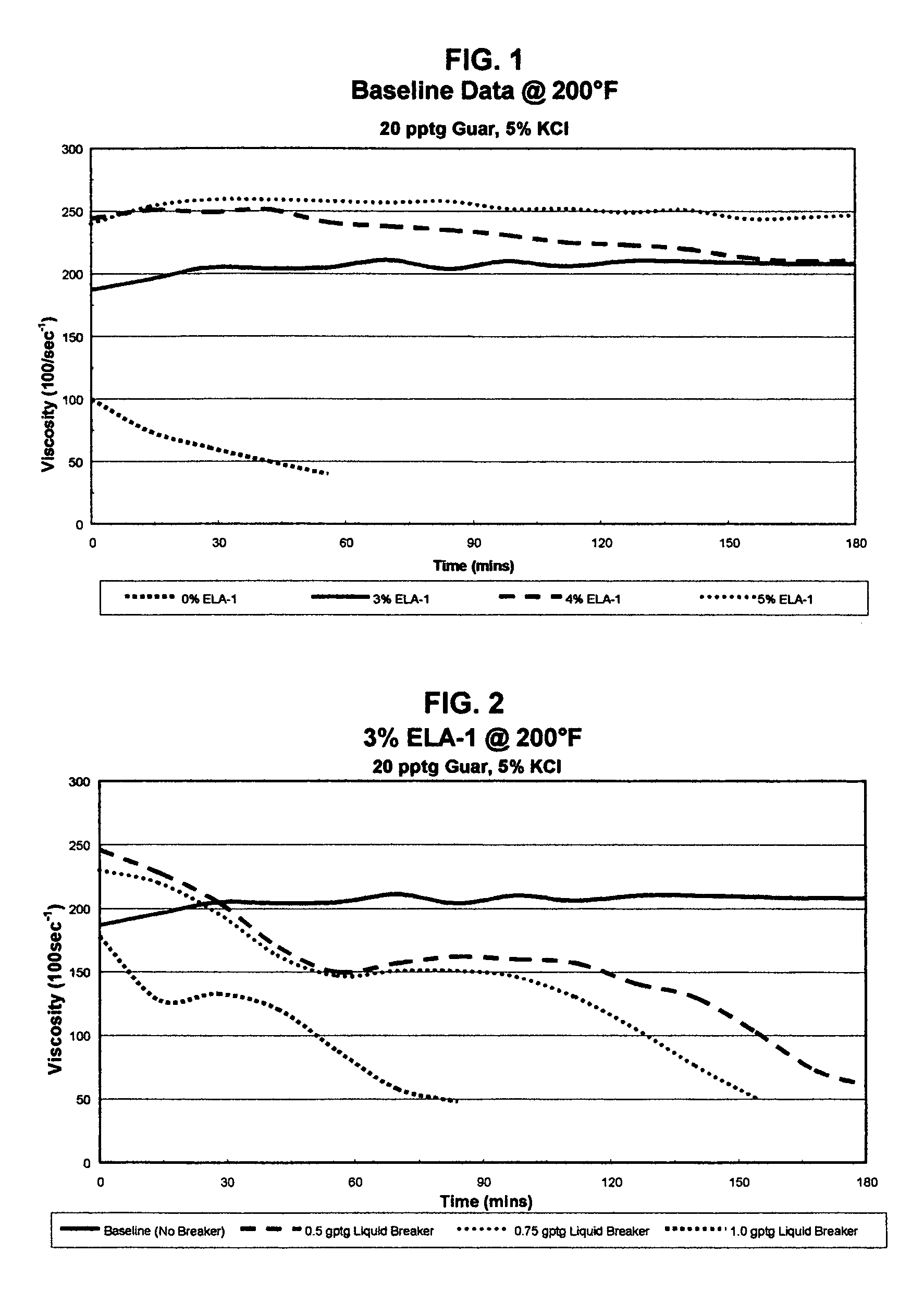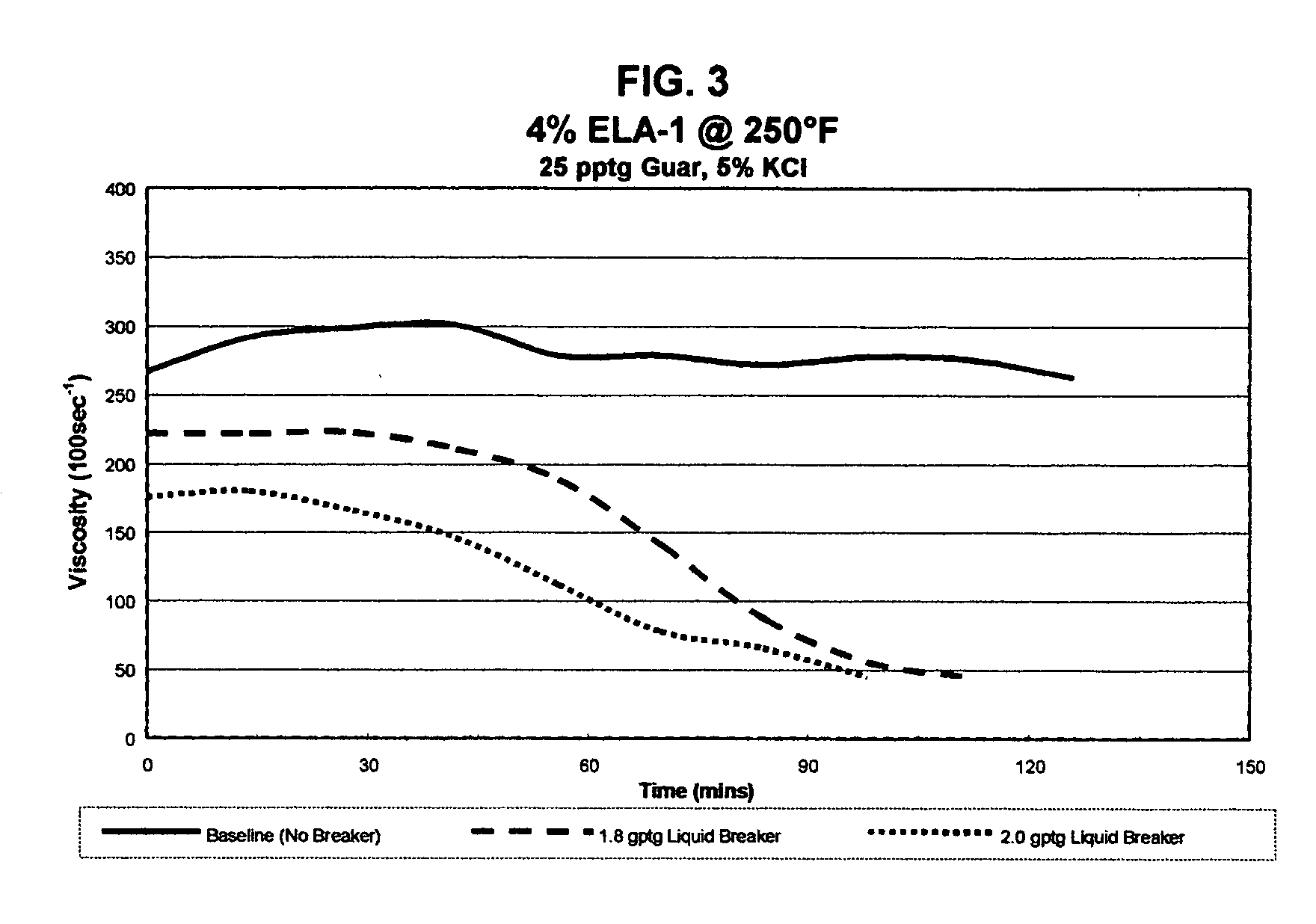Stabilizing crosslinked polymer guars and modified guar derivatives
a crosslinked polymer guar and derivative technology, applied in the field of viscoelastic fluids, can solve the problems of fluid deformation, complex development of suitable fracturing fluids, cracking or fractures that cannot close or heal completely, etc., and achieve the effect of increasing the stability of fluids
- Summary
- Abstract
- Description
- Claims
- Application Information
AI Technical Summary
Benefits of technology
Problems solved by technology
Method used
Image
Examples
example 1
[0033]FIG. 1 presents graphs of fluids containing varying concentrations of ELA-1 (Experimental Liquid Additive 1; ethylene glycol) and one test without in a guar gelled fluid at the elevated temperature of 200° F. (93° C.). These fluids contained normal amounts of conventional additives: antifoam, biocide, surface tension reducer, non-emulsifier, clay stabilizer, pH buffer, gel stabilizer and a borate crosslinker. The lowest, gray curve corresponds to the baseline where no stabilizer was added to the fluid as expected, the viscosity was low. The purpose of FIG. 1 was to show the effective stability gained with the use of the inventive stabilizer. Note that the curve for 0% ELA-1 is the performance of a typical 20 pptg (2.4 kg / m3) crosslinked fluid at 200° F. (93° C.) without the ELA-1. The other fluids with ELA-1 had considerably increased viscosity.
example 2
[0034]FIG. 2 shows that fluids with 3 vol % ELA-1 baseline test and the use of a liquid breaker with all of the additives of Example 1 at 200° F. (93° C.) to prove that even though the viscosity of the low polymer fluid can be stabilized with ELA-1, the viscosity can still be reduced by the use of breakers. The liquid breaker used was a polyol of U.S. Pat. No. 6,617,285 mentioned previously. It will be appreciated that the proportions given of gallons per thousand gallons (gptg) are essentially dimensionless and are readily translated to other units (e.g. liter per thousand liters) as the same values.
example 3
[0035]FIG. 3 shows that fluids with 4 vol % ELA-1 baseline test and the use of a liquid breaker with all of the additives of Example 1 at 250° F. (121° C.) to prove that even though the viscosity of the low polymer fluid can be stabilized with ELA-1, the viscosity can still be reduced by the use of breakers. The liquid breaker used was a blend of the polyol of Example 2 with tetrasodium ethylenediaminetetraacetic acid (Na4EDTA) of U.S. Pat. No. 6,706,769 mentioned previously.
PUM
 Login to View More
Login to View More Abstract
Description
Claims
Application Information
 Login to View More
Login to View More - R&D
- Intellectual Property
- Life Sciences
- Materials
- Tech Scout
- Unparalleled Data Quality
- Higher Quality Content
- 60% Fewer Hallucinations
Browse by: Latest US Patents, China's latest patents, Technical Efficacy Thesaurus, Application Domain, Technology Topic, Popular Technical Reports.
© 2025 PatSnap. All rights reserved.Legal|Privacy policy|Modern Slavery Act Transparency Statement|Sitemap|About US| Contact US: help@patsnap.com



